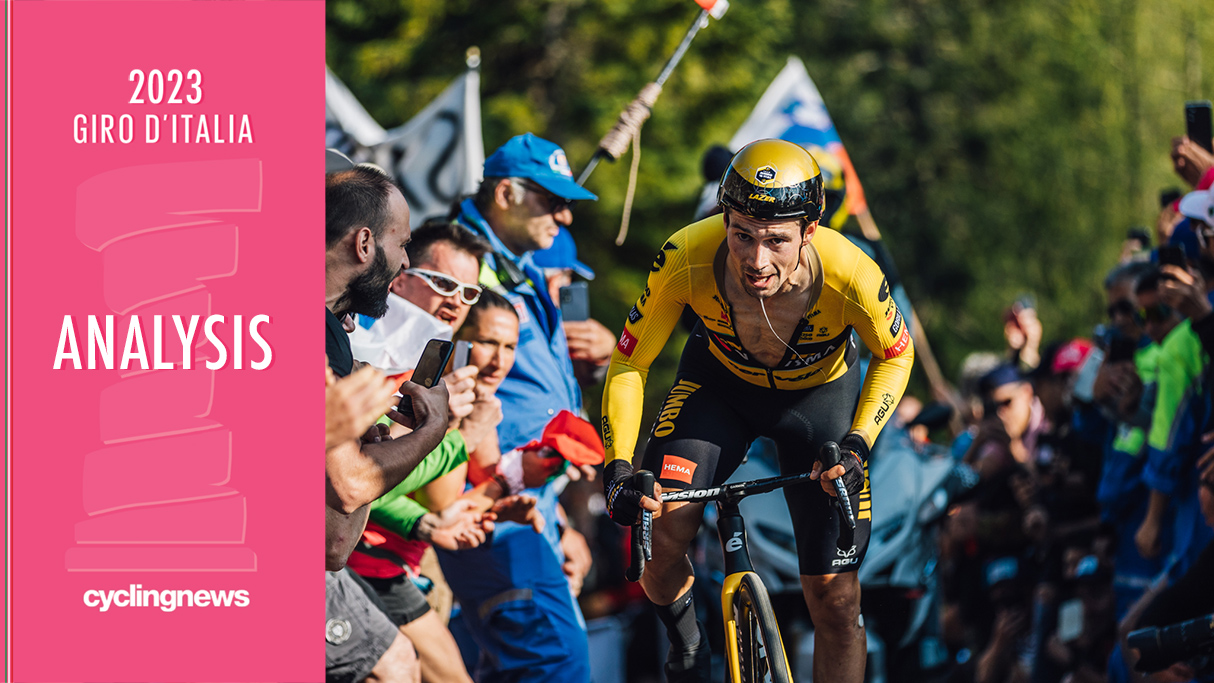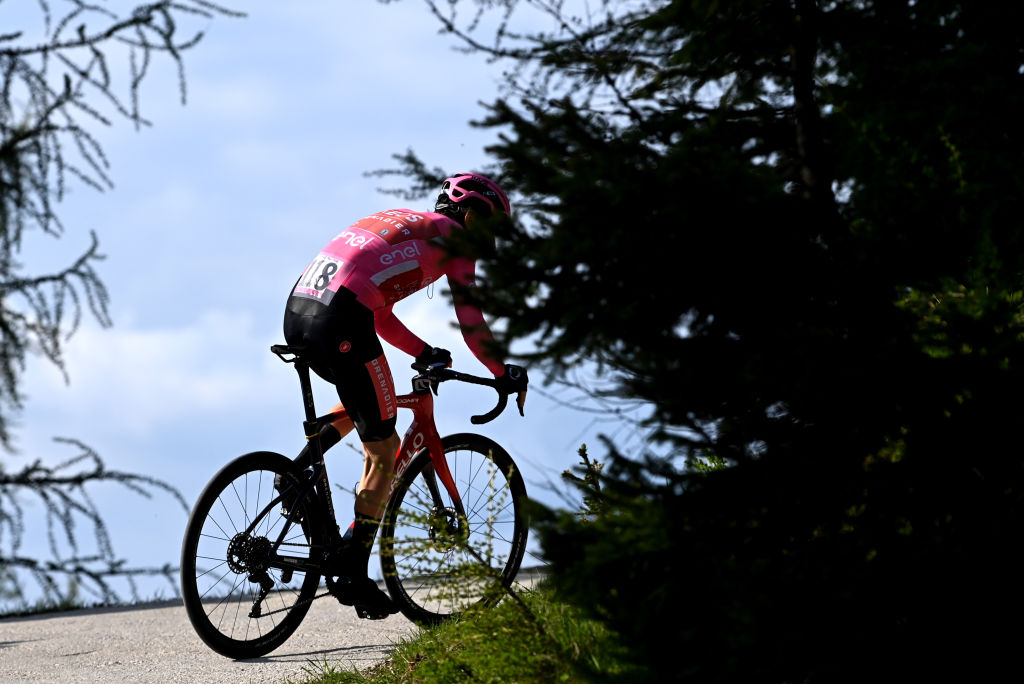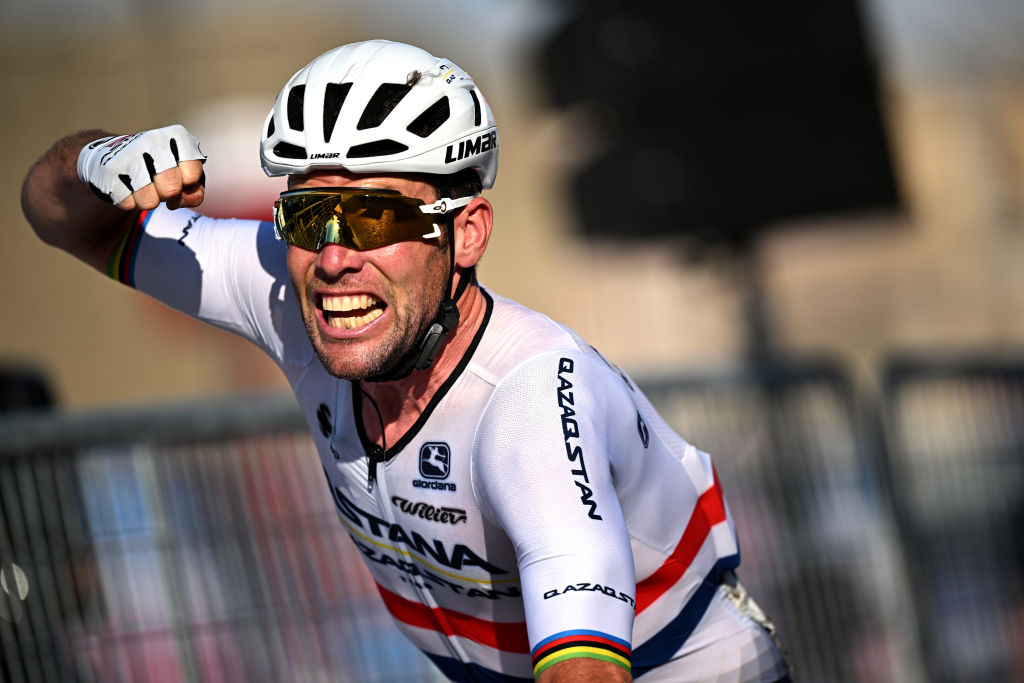Philippa York Analysis: Roglic, redemption and the valley of death
Monte Lussari provides grand finale, but the Giro needs a rethink

This was Italy at its finest, with the principal players lined up for one last piece of drama. Geraint Thomas versus Primož Roglič, with the specially-laid concrete track rising up to 1,744m the perfect setting as we all speculate how this is going to turn out.
Their respective histories proceed them and there are no tricks left in the book of racing that haven’t been applied to their respective careers. Between them, every box has been ticked, good and not so good, and this showdown is no different.
Thomas, steady as we go, has been reliable and consistently good. If there was anyone who would finish off a race as expected, it was him. At 37 he’s en route to be the oldest ever winner. It’s not quite his to lose, but there’s been nothing to suggest otherwise.
In the opposing corner, Roglič with three Vueltas to his name, has been brilliant on his day and shaky elsewhere, something we’ve come to expect as the years have gone by. In a race plagued by incidents and accidents, he’s always involved when something happens.
Indeed, both of them have amassed misfortunes aplenty. The mere mention of their names conjures up images of crashes and upsets, any race, any time. But they’ve got this far, even as all around them have succumbed to disasters. Amazingly, they’ve got back up from their inevitable visits to the tarmac and one of them will surely win the 106th Giro. This fourth Saturday is what we’ve waited for.
Splendid in the climber’s jersey, Thibaut Pinot, retirement looming, has one eye focused on being back home on the farm and the other on a farewell stage win. He could possibly be the diversionary subplot of the day. Most people have cats, dogs or something domesticated, the Frenchman has strayed slightly from the norm with a menagerie of horns and hoofs but that just adds to the charm. Human interest in the modern era doesn’t have to be Strava uploads and sleep quality data.
This is classic stuff, and RCS have planned it all perfectly. Even though it would have been nice to have had a few more sunny days and spectacular vistas, the third week has built from rain-soaked to this crescendo of excitement: Thomas, Roglič, redemption.
Get The Leadout Newsletter
The latest race content, interviews, features, reviews and expert buying guides, direct to your inbox!

If you wanted a religious experience, then the goat track up Monte Lussari is the perfect setting. The Slovenian fans supporting their compatriot won’t impress a man as solid as Geraint Thomas, but the images of the fluttering flags make for great TV. I hope Netflix have got all the insights because even the deluxe lieutenants Sepp Kuss and Jay Vine have stepped into the limelight right on cue. The suspense level couldn’t be any higher.
Realistically, though, João Almeida of the new generation will have got out of bed on Saturday morning and thought: ‘I can win this. They can do the emotional comebacks and storylines, but something will go wrong. It always does.
“We’ve seen this before, the script weaving towards the logical conclusion and then – bam! – the unexpected twist. They’ll both mess up. Over thirty, that’s vintage now. Me, I’m young, talented and at UAE. No problem, it’ll be another historic upset. Pinot’s Kim Goat will not be gorging on watermelon any time soon and I don’t care that my Insta following takes a hit.”
Into the valley of death
Nine hours later and the valley of death.
That’s the name given to the join between the concrete sections that everyone who has raced in Belgium hates. The ideal width for the wheels of the unwary and inexperienced. They’re normally in the direction of travel, but here on this ridiculously steep assault on the senses of the Giro survivors, they’re perpendicular to the direction of travel. Theoretically, they shouldn’t be a problem, but Primož being Primož, he gets captured by one with 3km to go. D’oh.
He’s already got us worried with the 1x setup and mountain bike gears, but he’s been twiddling away in his inimitable style and had 15 seconds on the maglia rosa when he hits a hole that everyone else has avoided without trying and he loses all drive.
Without a chain catcher, it takes him an eternity to get going again and in the Ineos camp they must have been congratulating themselves already. Thomas’ bike and helmet change at the start of the climb no longer seems a dubious, slow-motion choice. They’ll discuss that in the post-race analysis but for now, things seem okay. Or are they?
Roglič is back on it instantly, and suddenly things aren’t too rosy for Geraint, who is now the one suffering as three weeks of stress weigh heavily. This is physical, though, and not the mental anguish the Jumbo-Visma guys at the finish just went through as their man struggled with the dropped chain. This has become a La Planche des Belles Filles 2020 flashback of red faces and different helmets all over again.
We’ve done that story to death, and you can’t just swap the characters over. It’s not fair and even less so when Almeida finishes with a flourish. “Miglior tempo,” announces the speaker and the Portuguese hopeful slides onto to the hot seat. But not for long.
Twiddle, twiddle, one epic sprint up the final ramp and Primož Roglič puts 42 seconds into the young pretender. Not today, baby.
Only the pink jersey to go and he’s pedalling a big gear as per usual, though he’s not on top of it and is labouring. OMG. You have to be kidding, all that’s missing is Tom Dumoulin and Wout van Aert’s astonished faces, but this is going to be close.
He passes under the kilometre banner, and everyone is counting him in, but time runs out for the Ineos leader less than 200 metres from the line. And with that, Roglič’s absolution is complete. 14 seconds will be more than enough on the ceremonial circuits in the capital.
No longer will we say he’s the guy that folds under pressure, no more character assassinations, and doubts that he can still be trusted with the responsibility. Geraint Thomas wasn’t bad, he was second on the stage – it’s just that his rival was spectacular.
Maybe this is a Slovenian trait and nothing to do with UAE magic after all. However much it hurts Almeida’s visions of grandeur, they have to stay limited for the moment. The golden oldies have seen off the impetuous enthusiasm of guys who not a few years ago had pictures of them on their walls.
A Giro for the ages?

The final weekend certainly lived up to the expectations of RCS and Mark Cavendish’s epic sprint with the Colosseum in the background was the icing on the cake, but there’s the lingering question of whether this a Giro that will go down in the history books.
For Ineos, it was and it wasn’t. At the start, Thomas would have bitten your hand off if offered days in the maglia rosa and second place in Rome, but like the loss of Remco Evenepoel, we’ll never know what might have been if Tao Geoghegan Hart hadn’t crashed out. He looked to be in better shape than his co-leader and waiting to pounce in the third week.
Almeida confirmed the potential we first saw in 2020 when he finished fourth on his first visit to the Giro. Damiano Caruso was quiet and slightly subdued, unlike Thibaut Pinot who showed that he’s much better without the pressure of the French nation on his shoulders. Best climber and a top five was a complete surprise to him and many others.
Then we come to sixth to tenth places. Thymen Arensman, Eddie Dunbar and Andreas Leknessund all emerged into our consciousness – or re-emerged in the case of the Jayco-Alula rider. Bora-Hansgrohe lost Aleksandr Vlasov, but Lennard Kämna didn’t quite seize the opportunity of sole leadership. They did take home two wins with Nico Denz so things kind of balanced out for them.
The real positives have been Derek Gee, Ben Healy and Einer Rubio, as well as the fact that the escapees survived more than usual. The action on the hardest slopes between the GC contenders - when they weren’t shivering in rain jackets - was a plus, too. But there was the feeling that, for a Grand Tour of the Giro’s standing, it was all too little too late.
The weather will get most of the blame, while the intimidating route stifled the GC battle and COVID-19 did for Remco Evenepoel, who we were all relying upon to bring the race to life.
The Italians may have been happy with five victories with Jonathan Milan also taking the points competition in addition to Davide Bais, Alberto Dainese and Filippo Zana’s wins. That added a lot of home-grown contentment, but RCS need to think if stacking the final week with monster climbs is the way to go. Bigger might have seemed better on paper, but unfortunately it wasn’t the case when other external factors got in the way of everyone being able to compete.
It’s time for a rethink.
Philippa York is a long-standing Cyclingnews contributor, providing expert racing analysis. As one of the early British racers to take the plunge and relocate to France with the famed ACBB club in the 1980's, she was the inspiration for a generation of racing cyclists – and cycling fans – from the UK.
The Glaswegian gained a contract with Peugeot in 1980, making her Tour de France debut in 1983 and taking a solo win in Bagnères-de-Luchon in the Pyrenees, the mountain range which would prove a happy hunting ground throughout her Tour career.
The following year's race would prove to be one of her finest seasons, becoming the first rider from the UK to win the polka dot jersey at the Tour, whilst also becoming Britain's highest-ever placed GC finisher with 4th spot.
She finished runner-up at the Vuelta a España in 1985 and 1986, to Pedro Delgado and Álvaro Pino respectively, and at the Giro d'Italia in 1987. Stage race victories include the Volta a Catalunya (1985), Tour of Britain (1989) and Critérium du Dauphiné Libéré (1990). York retired from professional cycling as reigning British champion following the collapse of Le Groupement in 1995.
